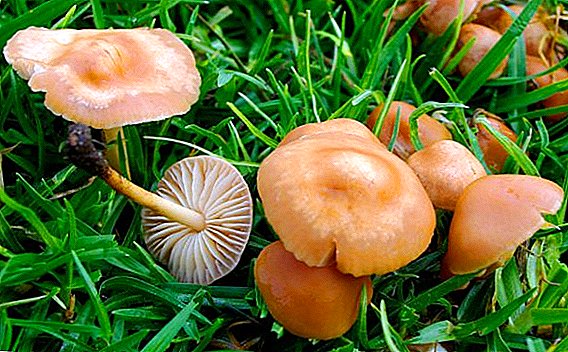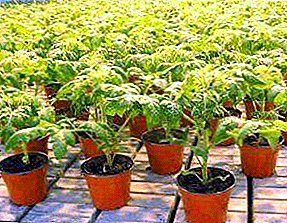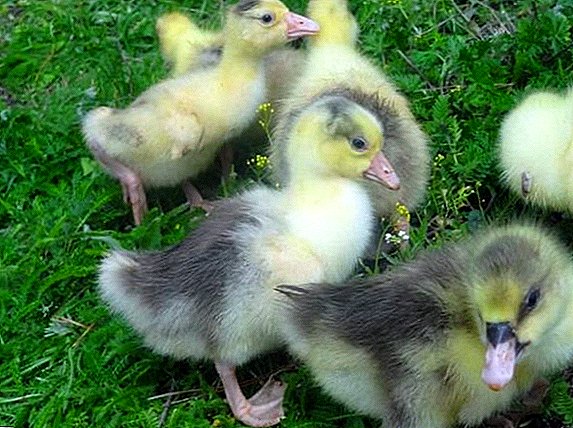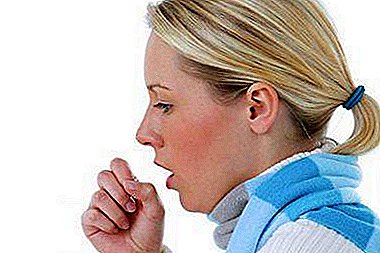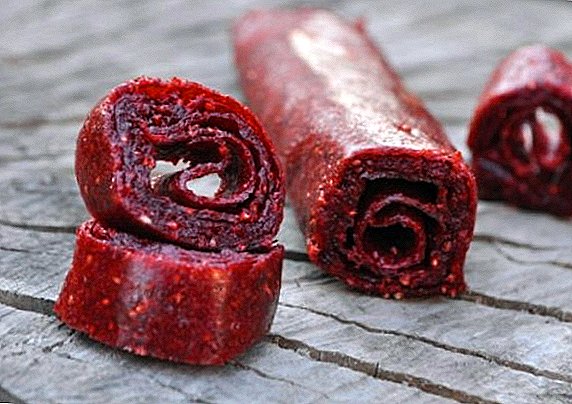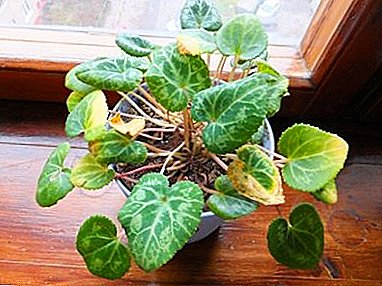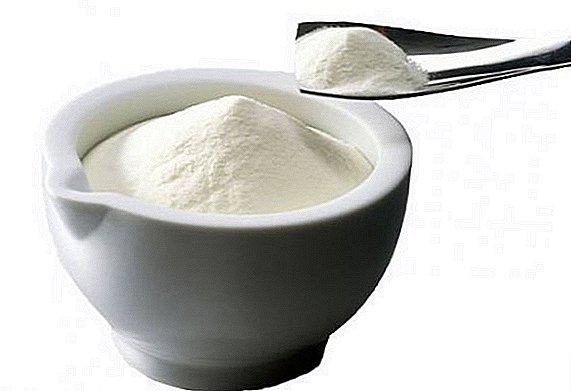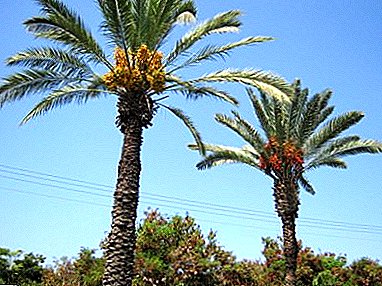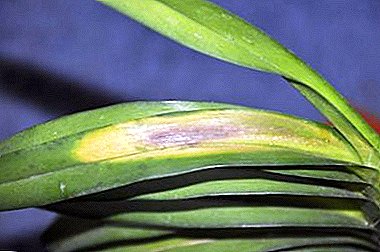
Phalaenopsis belongs to the Orchid family. And this plant has high requirements for their care. Therefore, if the florist does not comply with the recommendations when growing Phalaenopsis, there may be some difficulties during this process. This may be the appearance of pests and disease.
One of the signs of such problems are spots on the surface of the plant. In this article we will talk about why they appear, how to deal with them, as well as how to further protect the orchid from their formation.
Types of pigmentation
Pigmentation can be distinguished by several types of characteristics:
- the size (there may be absolutely unobtrusive specks, which in the far distance in large numbers seem to be one big spot, and sometimes very large blotches appear);
- Colour (all shades of yellow, brown, dark and black are found);
- the form (most often these are round specks, but the edges are not always smooth; they are even, convex, or vice versa, concave).
A photo
You will see a photo of black and other points on the flower:





Which patches are dangerous and which are not?
It is very difficult to say exactly what is dangerous for the plant. However, most often, if the inclusions are not very noticeable (small sizes or the color of pigmentation is not very different from the phalaenopsis area), this suggests that they most likely are not cause for concern.
Reference! It is important to observe these stains constantly, because they can develop into something more serious. The main thing is to notice the changes in time and take measures to eliminate them.
Causes of
There can be many reasons for such a negative process in the life of a plant. Let's call them:
- Sunburning. To avoid this, you need to choose the right location for your beauty. There should be a lot of light, but it should be diffused.
- Incorrectly chosen watering mode. Often, it is excessive soil moisture leads to stains on the plant. This is due to rotting of the root system.
- Poor air and water circulation in the pot. The drainage layer will help to ensure the movement of air and water in the tank for the flower. Its height should vary between 1.5-2 centimeters. It is also necessary to ensure that there are holes at the bottom of the pot.
- Lack of fresh air in the room. The room needs to be aired regularly. However, this procedure should not turn into drafts. Everything should be in moderation.
- Errors in choosing a pot. Capacity for phalaenopsis should be a couple of centimeters in diameter more than the volume of the entire root system. This will ensure normal growth and healthy growth for the roots.
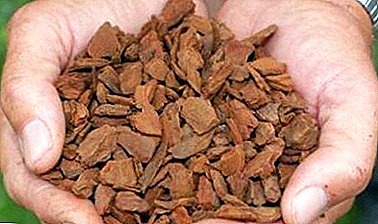 Poor quality substrate. Soil should be designed exclusively for the Orchid family. Others will not work. It is necessary to observe that after wetting the soil does not lump, and also that bark is present in the soil mixture.
Poor quality substrate. Soil should be designed exclusively for the Orchid family. Others will not work. It is necessary to observe that after wetting the soil does not lump, and also that bark is present in the soil mixture.- Improper use of fertilizer. Often the florist, wanting even faster growth, development and flowering of phalaenopsis, overdoes with additional feeding. In no case should this be done. It is important to strictly follow the instructions for use.
Which parts of the plant can be found?
Pigmentation can manifest itself absolutely on any part of phalaenopsis. And the main danger is that specks may appear on the root system. And there it is almost impossible to notice them in time. So it turns out that the plant is slowly dying, and the florist cannot determine the causes of such a process and, even less, eliminate these causes.
Flower hazard
Any changes in the appearance of the plant, including the appearance of inclusions, is a sign of the development of a disease. This can occur due to improper care, and sometimes the disease is transmitted from a sick flower to a healthy one. The disease leads to the death of the flower completely or the death of some of its plot. therefore The main task of the grower is to observe the appearance of the phalaenopsis. and timely response to the slightest changes.
What to do when they are detected - methods of treatment
- To start a grower, it is necessary to isolate the affected plant from healthy ones in order to protect them.
- And then find the cause of the appearance of pigmentation and only then proceed with the treatment.
All other actions depend on the type of disease, therefore, are assigned in each case individually.
Step-by-step instructions for the treatment of inclusions caused by diseases
Bacillus cypriped

Starting a fight with such a disease should be urgently since its negative impact spreads with rapid speed and leads to the death of the flower.
How to recognize? Spots begin to appear on the edge of the sheet plate and literally in a day or two reach its base. In addition, the leaves lose their turgor and emit a characteristic unpleasant odor.
Hives

Characteristic features - miniature specks, the diameter of which does not exceed three millimeters, brown shade. Urticaria usually spreads only on leaves.
To eliminate this disease, the florist must:
- raise the air temperature in the room to the optimum (in summer it is 22-26, and in winter - 18-23);
- increase the level of humidity to about 70%.
Late blight

You can find out this disease by the following sign - black rot at the base of the leaf, which gradually spreads throughout its area. The risk of late blight is that its pathogenic spores can persist in the soil for a long time.
Save the plant after infection with this disease is almost impossible. Therefore, it is necessary to adhere to the following rules that will help avoid late blight infection:
- keep the air humidity at the level of 70-75%;
- do not supercool phalaenopsis;
- make sure that after watering on the surface of the plant there are no water drops.
Dry spots

Such pigmentation can be both dark and light shade. However, to cure a flower from dry spots is impossible. Because usually such blotches are signs of burns. You can get rid of them by removing the burnt area or completely part of the plant. It is better to avoid the appearance of dry spots. This can be done by following simple guidelines:
- in cold weather, make sure that the plant does not have direct contact with heat sources (it may be heating or lighting devices);
- starting from spring, observe that the direct rays of the sun do not fall on the phalaenopsis (it is better to move the flower to the east or west side of the room at all, or to attract it).
Reference! In rare cases, dry spots appear due to the attack of fungal infections. In such a situation, the plant is treated with a fungicidal agent, and later the florist should control the air circulation in the room.
Mesophyll collapse

A characteristic feature of this disease is uneven patches of yellow color, which are also dented leaves.
Botanists say Mesophyll collapse appears due to watering or spraying phalaenopsis with low-temperature water.
Methods of treatment if the pathogens are bacteria
Phyllostictina pyriformis

When infected with this bacterium, pigmentation appears on the plant. (it can be both yellow and black). The size of these spots does not exceed a few millimeters. A distinctive feature of these inclusions is the fact that they do not grow for a long time. Therein lies the danger. Because during such a "stagnation" the bacterium develops inside the tissue. And after that the sheet plate dies off. This occurs approximately 10-15 days after the appearance of stains.
What can you do with the flower to eliminate the yellow or black dots? Unfortunately, to save the orchid after infection will not succeed. But you can prevent the emergence of Phyllostictina Pyriformis. To do this, make sure that the water in the pot does not stagnate.
Burkholderia gladioli

In our climatic conditions, such a bacterium is extremely rare. This pest leads to darkening of almost the entire surface of the sheet.
To avoid contamination, you need to control the temperature of the air in the room, preventing it from cooling.
Chlorosis

Sign of the lesion are large spots that do not have a clear boundary. Their color is light. Chlorosis is not considered a disease, but rather its predecessor.
This bacterium appears for many reasons: both because of the erroneous moistening of the soil, and because of an improperly chosen fertilizer complex.
Prevention
Any problem is easier to prevent than to solve. The same is with the spots on phalaenopsis. They can be avoided by adhering to the following rules:
- Competent watering. Moisturize the soil again only after it has stood dry for 2-3 days. Florists recommend watering Phalaenopsis by immersion.
- Comfortable air temperature. Do not forget about the mandatory drop in waste temperatures (the difference is about 4-5 degrees).
- Light mode. It is necessary to provide lighting for the plant for 10-12 hours per day. But closely monitor that direct sunlight does not fall on the flower.
- Top dressing. It is necessary to fertilize phalaenopsis twice a month. It is necessary to stop feeding during flowering.
- Selection of soil. It should contain bark, moss, river sand and peat. And also do not forget about a good drainage layer.
All these recommendations will help the grower to maintain the health and beauty of their home favorite.


 Poor quality substrate. Soil should be designed exclusively for the Orchid family. Others will not work. It is necessary to observe that after wetting the soil does not lump, and also that bark is present in the soil mixture.
Poor quality substrate. Soil should be designed exclusively for the Orchid family. Others will not work. It is necessary to observe that after wetting the soil does not lump, and also that bark is present in the soil mixture.